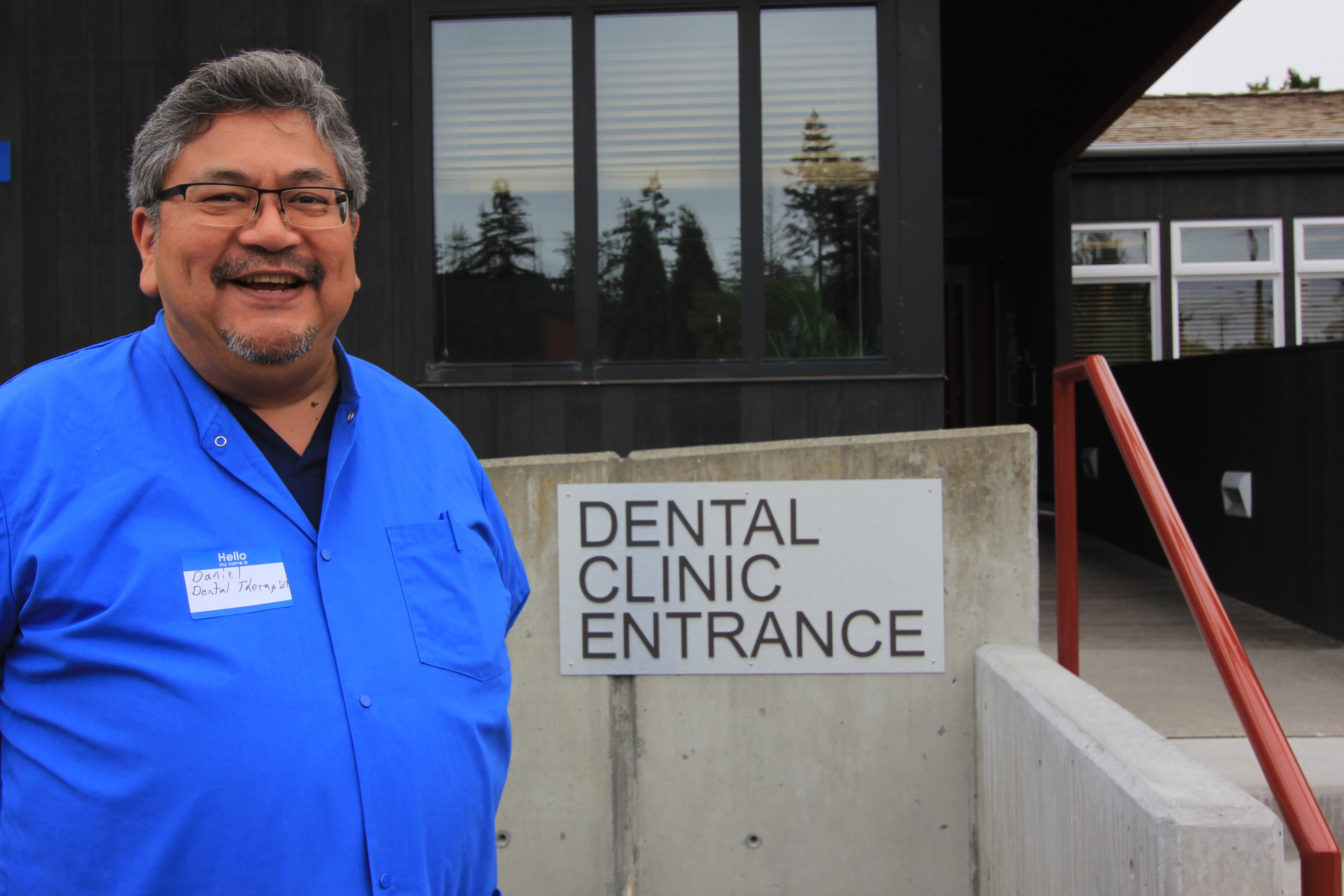
In September 2022, the fifth dental therapy education program in the U.S. opened at Skagit Valley College (SVC), a community college in Mount Vernon, WA. The program was named dəxʷx̌ayəbus (pronounced dahf-hi-ya-buus), meaning “a Place of Smiles” in the Lushootseed language and is a collaboration between the college and the Swinomish Indian Tribal Community.
The National Partnership for Dental Therapy’s December 2022 webinar explored the story of this collaboration and highlighted some core lessons. Watch the recording here.
Speakers included:
- Darren Greeno, executive dean for instruction, workforce education, Skagit Valley College
- John Stephens, consultant, Swinomish Indian Tribal Community and former CEO, Didgʷálič Wellness Center (digiwallic)
- Laura (Hale) Brannon (moderator), project manager, Dental Therapy, Community Catalyst
SVC’s program is the second to be accredited by the Commission on Dental Accreditation, which oversees all U.S. dental education programs. The first accredited program is in Alaska while three dental therapy programs in Minnesota are currently pursuing accreditation.
Dental therapy could resolve deep, local oral health disparities
Dental therapists are licensed oral health providers who provide routine care, such as exams and filling, while working under the supervision of a dentist. They’re a cost-effective means of expanding access to care for and can be uniquely trained to care for people who have long gone without access to services. Dental therapy education programs can serve as accessible pathways for people from communities without access to high-quality dental care to become the providers their communities need while building a more representative dental workforce.
Mr. Stephens was administrator for the Swinomish Indian Tribal Community’s health programs for over 40 years. He described what inspired them to pursue dental therapy. As the community faced deep oral health disparities, he looked to Alaska’s success, where dental therapists served more people in a cost-effective way.
Research analyzing the Swinomish dental system pointed to dental therapy as a promising solution. Mr. Stephens explained that “half of what the dentists were doing could be done by a trained dental therapist using the same scope of practice [that existed] in Alaska.” Dental therapists would also cost half as much to employ than a dentist, so “it was a win all the way around…”
“Cultural competence became a real priority”
Mr. Stephens also emphasized how dental therapy could restore the community’s broken relationship with the oral health system. Like many tribal nations, the Swinomish community experienced “decades” of barriers to care.
He explained, “we had multiple generations that had [a] poor experience with dental services, and we needed to address trust and fear as part of addressing all the disparities. … So cultural competence became a real priority in moving forward...”
Growing a workforce from the underserved community it serves can improve care – a lesson applicable to many historically excluded groups.
Designing a training for indigenous students’ success
Mr. Greeno discussed how SVC designed their dental therapy program to meet the goals of a representative workforce. They again looked to Alaska’s training program, given its achievements.
Trust was one critical ingredient to collaboration. Another important factor was approaching the project with fresh eyes and, as Mr. Greeno described, “cultural humility.” This meant placing traditional academic structures aside and asking, “What would benefit our community? What would benefit our community partners, and what would benefit our students?”
Unique elements ensuring it was accessible to students from historically excluded communities, especially those with low incomes, included:
- Limiting the time and cost burden on students by condensing three academic years into just over two calendar years;
- Offering a workplace-like schedule of 8 a.m.-5 p.m. for classroom instruction and giving students hands-on experience in the tribal dental clinic; and
- Using a cohort structure for mutual support, a culturally relevant and evidence-based model.
Presenters also noted the program confers an associate’s degree on graduates and, as CODA-accreditation demonstrates, trains them to offer proven, high-quality care.
New dental therapy programs could solve a crisis
As students in the first dəxʷx̌ayəbus cohort move forward, it’s clear that many other communities could benefit from this type of program. Speakers emphasized approaching the process of building a local training program with an open mind, being persistent and understanding the immense value it can bring.
On this last point, Mr. Stephens said it best. “Oral health disparities… are a public health crisis. Community colleges can fill a significant role in workforce development to produce providers to address that public health crisis.”
Photo credit: Dental therapist Daniel Kennedy at the Swinomish Dental Clinic. Photo courtesy of the Swinomish Indian Tribal Community.
